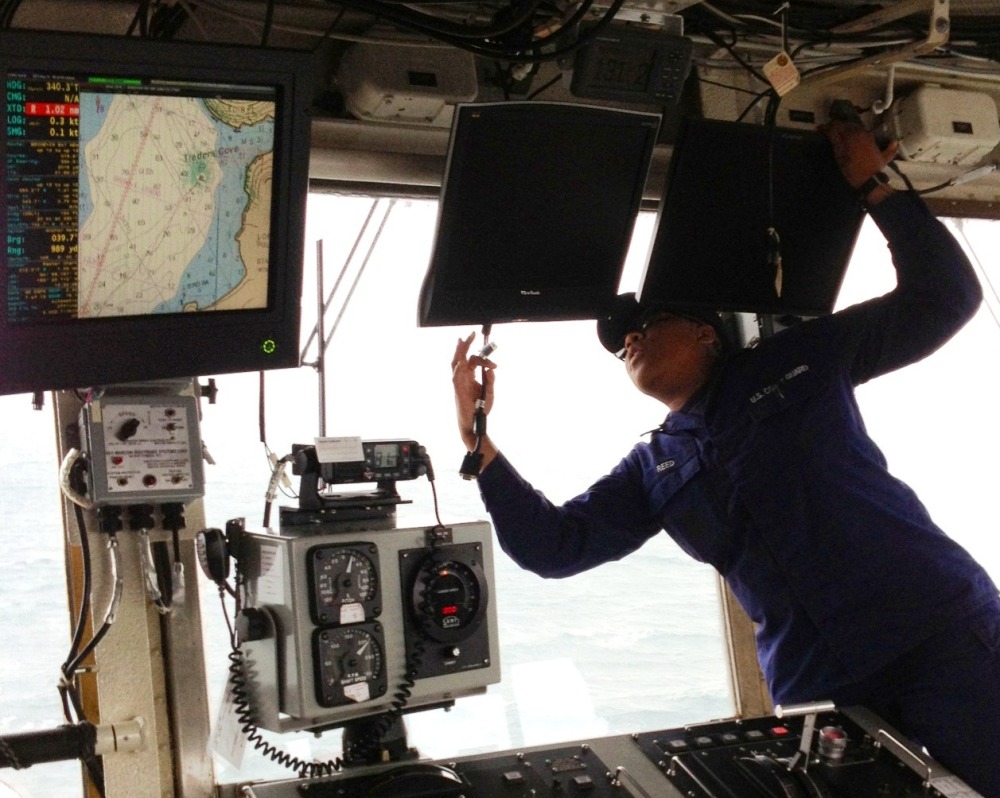By Ashley Chappell, Integrated Ocean and Coastal Mapping coordinator
With 3.4 million square nautical miles of U.S. waters to survey and chart, Coast Survey is up against some big challenges in keeping nautical charts current. A complete survey of those waters would require over 500 ship years and $5 billion ‒ just to acquire the data. It is no wonder that we put substantial effort into a program known as integrated ocean and coastal mapping (IOCM), where trusted partners can provide high quality, standards-compliant hydrographic survey data for a multitude of uses, including chart creation.
One of our biggest challenges is in the Arctic. Whether you knew it or not, the U.S. is an Arctic nation thanks to Alaska, and this formerly frozen region is becoming more accessible to ship traffic as sea ice melts. But much of our Arctic coastal areas have never had full bottom bathymetric surveys, and some haven’t had more than superficial depth measurements since Captain Cook explored the northern regions in the late 1700s.
So NOAA has a dilemma: how do we survey and chart an ice-diminished Arctic when we have limited resources and limited seasonal access? We assessed data age and quality, we reviewed our chart coverage, and we developed the Arctic Nautical Charting Plan for where we would improve chart coverage if we get new data. But our resources for ship and contract surveys can only do so much, and we need more data…

Enter our maritime partners, the U.S. Coast Guard. Since 2008, NOAA has been working with the U.S. Coast Guard in Alaska to improve shipping safety. For instance, the Coast Guard buoy tenders, that set buoys and dayboards used to mark the safe passage through waterways throughout Alaska, were finding that some of the natural channels moved from year to year, and so they started using single beam sonar to find the channels. Seeing a way to support this effort, NOAA experts joined U.S. Coast Guard buoy tenders as they headed into the Bering Sea, helping to train Coast Guard personnel to set the buoys safely, quickly, and accurately.
We also started exploring the possibility of the Coast Guard collecting hydrographic data for nautical charts. In 2012, Lt. Cmdr. Mark Blankenship was NOAA’s lead on a joint NOAA/USCG Arctic hydrographic project aboard the Coast Guard Cutter Hickory from Homer, helping to develop an operational procedure to get Coast Guard survey data to NOAA. This year, we are happy to see that professionalism, enthusiasm, and teamwork has resulted in Coast Guard Cutter SPAR providing Bechevin Bay data that will help guide our decision-making for survey priorities.
SPAR commanding officer Lt. Cmdr. Michele Schallip signed the data set on September 10, and highlighted the contributions of Boatswain Mate 1st Class Michael Cobb, who spearheaded the project, with the assistance of NOAA chief survey technician Tami Beduhn, navigation manager Lt. Matt Forney, and Lt. j.g. Jon Andvick.
With the Alaskan coast comprising 57% of the U.S. navigationally significant waters, a multi-agency partnership for hydro survey data is necessary for maritime safety. This year’s successful SPAR survey is an important step in that effort. We look forward to continuing this work with our fantastic Coast Guard partners, and we hope to expand the IOCM concept to other vessels that have survey capability in the Arctic.


News and Updates
One Reply to “NOAA and Coast Guard work together to get more surveying done in the Arctic”